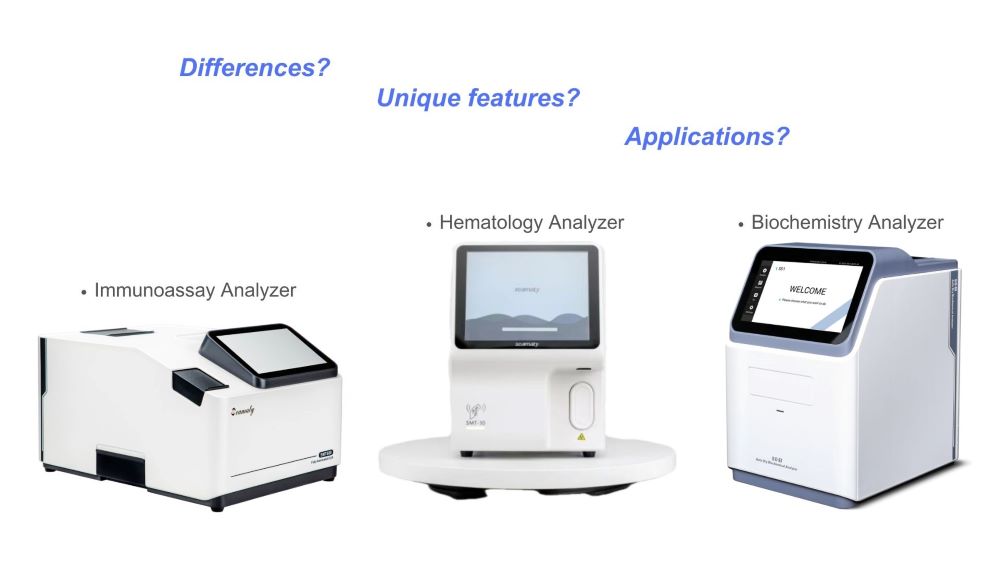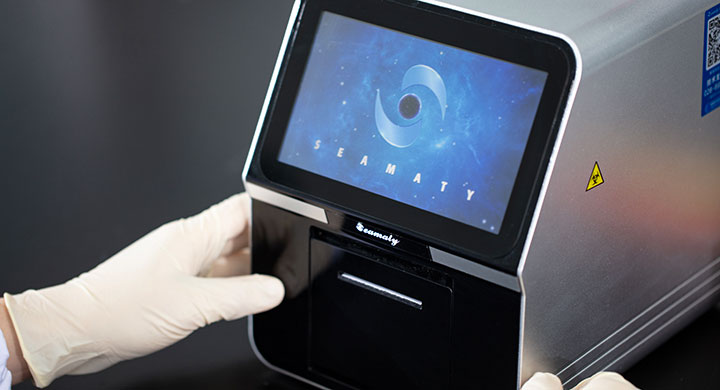release time:2023-04-03 14:34:14
In vitro diagnostics (IVD) tests are crucial in the identification and diagnosis of diseases, monitoring of therapies, and detecting drug resistance. In this article, we will discuss various aspects of IVD, including its definition, types, examples and advantages.
In vitro diagnostics (IVD) refers to tests and diagnostic procedures that are performed outside the human body. IVD has revolutionized the healthcare industry by providing accurate, precise, and timely results, which allow healthcare professionals to make informed decisions and provide timely treatments.
The IVD market is growing rapidly, driven by factors such as the increasing prevalence of chronic diseases, the rise in the geriatric population, and the growing demand for personalized medicine. Since the 1980s, the global in vitro diagnostic industry has experienced four revolutions of "biochemical, enzyme, immunoassay and molecular diagnostics" and has formed a mature industry worth tens of billions of dollars. According Market Research, the global IVD market is projected to reach $129.4 billion by 2027, with a compound annual growth rate of 4.64%.

IVD tests are of different types, including clinical biochemical, immunochemistry, molecular diagnostics, and point-of-care tests.
Immunochemistry
(Immunodiagnosis)
Types of In Vitro Diagnostics(IVD) Tests
Clinical Biochemical
Biochemical analysis is the most commonly used methods for clinical in vitro diagnosis which measures blood glucose and blood lipids, liver function, kidney function and cardiac enzyme profile in blood, urine and other body fluids.
Immunochemistry tests determine whether the immune status of the body is normal by identifying and measuring the levels of proteins, hormones, and tumor markers in the blood.
Molecular Diagnostics
Molecular diagnostics such as PCR (Polymerase Chain Reaction) involve the detection and measurement of genetic material, such as DNA or RNA, to diagnose diseases.
Point-of-Care tests (POCT)
POCT is a segment of the in vitro diagnostic industry. POCT testing instruments are small, portable, easy to operate, and can be used directly at any sampling site for collection and rapid analysis.
So, what can we do with in vitro diagnostics? Here are some use cases.
One of the key areas where IVD has made a significant impact is in the diagnosis and management of infectious diseases. Rapid diagnostic tests (RDTs) for infectious diseases such as malaria, HIV, and tuberculosis have improved the detection and treatment of these diseases, particularly in resource-limited settings. RDTs are easy to use, require minimal training, and can provide results within a few minutes, allowing healthcare professionals to initiate timely treatments.
IVD tests have also played a crucial role in the fight against COVID-19. The rapid development and deployment of COVID-19 diagnostic tests have been instrumental in identifying and containing the spread of the virus. The availability of highly accurate and rapid diagnostic tests has enabled healthcare professionals to diagnose and isolate infected individuals quickly, preventing the spread of the virus.
IVD tests have several advantages over traditional diagnostic methods, including speed, accuracy, and cost-effectiveness. First, unlike traditional diagnostic methods, which may take several days to produce results, IVD tests can provide results in a matter of hours or even minutes, allowing healthcare professionals to make timely decisions.
Second, IVD products have undergone rigorous testing and validation to ensure their accuracy and precision. IVD tests are also highly accurate, with a low rate of false positives and false negatives, reducing the risk of misdiagnosis and unnecessary treatments. This means that healthcare professionals can have confidence in the results they obtain from IVD tests, which can help guide treatment decisions.

Additionally, IVD tests are cost-effective, as they require less infrastructure, equipment, and personnel compared to traditional diagnostic methods. IVD products can be used to test for a wide range of diseases and conditions, making them a valuable tool in diagnosing and monitoring health. IVD products can also be used in a variety of settings, from hospitals and clinics to research laboratories.
In conclusion, in vitro diagnostics have revolutionized the healthcare industry by providing accurate, precise, and timely diagnostic results. IVD tests are of different types, including clinical chemistry, immunochemistry, hematology, microbiology, and molecular diagnostics. IVD tests have several advantages over traditional diagnostic methods, including speed, accuracy, and cost-effectiveness. IVD tests have made significant contributions to the diagnosis and management of infectious diseases and have played a crucial role in the fight against COVID-19. As the demand for personalized medicine and precision healthcare continues to grow, IVD is expected to play an increasingly important role in the healthcare industry.

2023-11-29
Discover the differences between Biochemistry Analyzer vs Hematology Analyzer vs Immunoassay Analyzer in our insightful guide. Explore unique features, applications, and technological advances. Empowering healthcare professionals with vital insights for precise patient care.

2021-08-12
POCT (Point of Care Testing), immediate test, also known as bedside rapid test, is a sub-industry of the in-vitro diagnostics (IVD in-Vitro Diagnostics) industry. POCT is a test method that is performed on the sampling site, using portable analytical instruments and supporting reagents to quickly obtain test results.

2021-08-04
SD1 is a fully automatic biochemical analyzer successfully developed on the basis of Seamaty series products for medical and health diagnosis and precise reference laboratory experimental results.